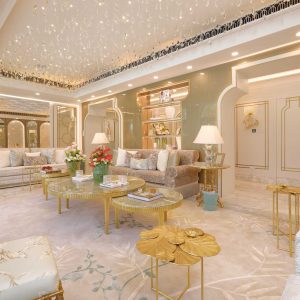Interior design is not just about arranging furniture and selecting color palettes; it’s a deeply psychological process that can profoundly impact our emotions, behaviors, and overall well-being. The choices made in interior design can evoke specific feelings, influence our mood, and shape our experiences within a space. Here’s a closer look at the psychology of turnkey interiors design and how it affects our lives:
Mood enhancement:
The colors, textures, and lighting in a space have a direct influence on our mood. Warm colors like reds and yellows can evoke feelings of energy and warmth, while cool colors like blues and greens promote calmness and relaxation. Interior designers carefully choose color palettes to align with the intended mood of a room.
Spatial perception:
The arrangement of furniture and the use of spatial design can impact our perception of space. Strategic placement of mirrors, for example, can make a room feel larger and more open, while the careful arrangement of furniture can create cozy and intimate atmospheres.
Comfort and well-being:
Comfort is a key consideration in interior design. The choice of furniture, upholstery, and materials directly affects our physical comfort. Ergonomically designed furniture can reduce discomfort and promote well-being.
Productivity and focus:
In workspaces, the design can influence productivity and focus. Proper lighting, comfortable seating, and an organized layout can enhance concentration, while well-designed collaborative areas can encourage creativity and teamwork.
Flow and movement:
The flow and movement within a space can impact our sense of ease and efficiency. Interior designers consider the circulation patterns, traffic flow, and the arrangement of furniture to ensure that spaces are functional and easy to navigate.
Personalization and identity:
Personalization plays a crucial role in interior design. Spaces that reflect the personality and identity of the inhabitants can create a sense of belonging and emotional attachment. Personal items, artwork, and decor choices contribute to this sense of identity.
Emotional resonance:
Interior design can evoke emotions and memories. For example, a cozy reading nook with a soft chair and warm lighting may trigger feelings of nostalgia and comfort, while a minimalist, modern space might convey a sense of sophistication and simplicity.





